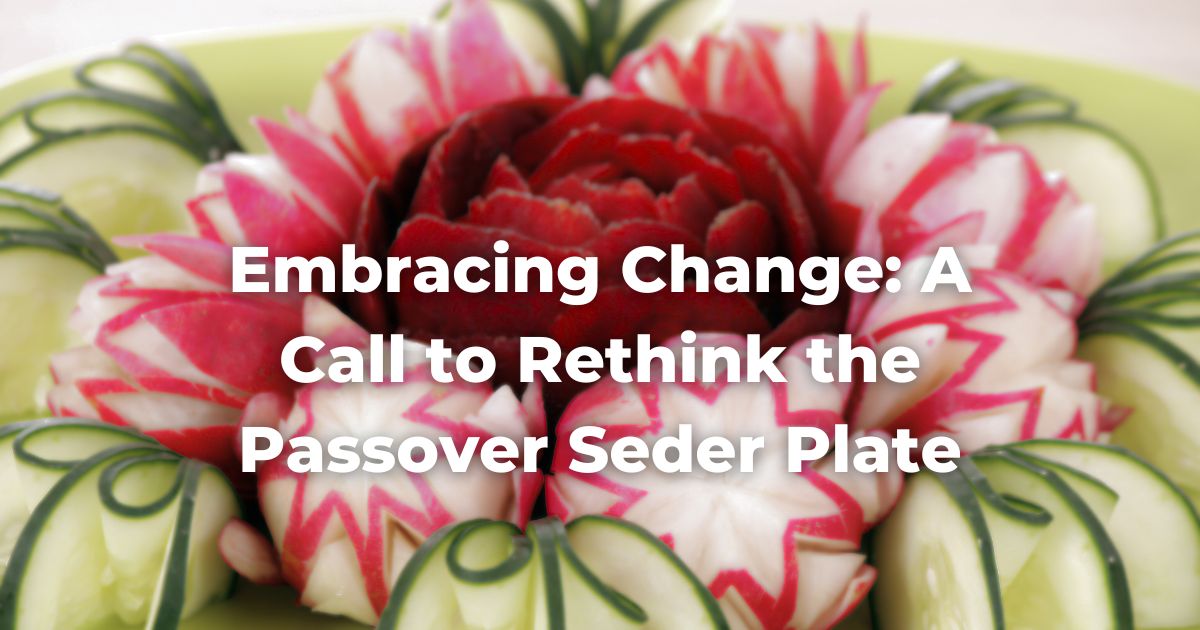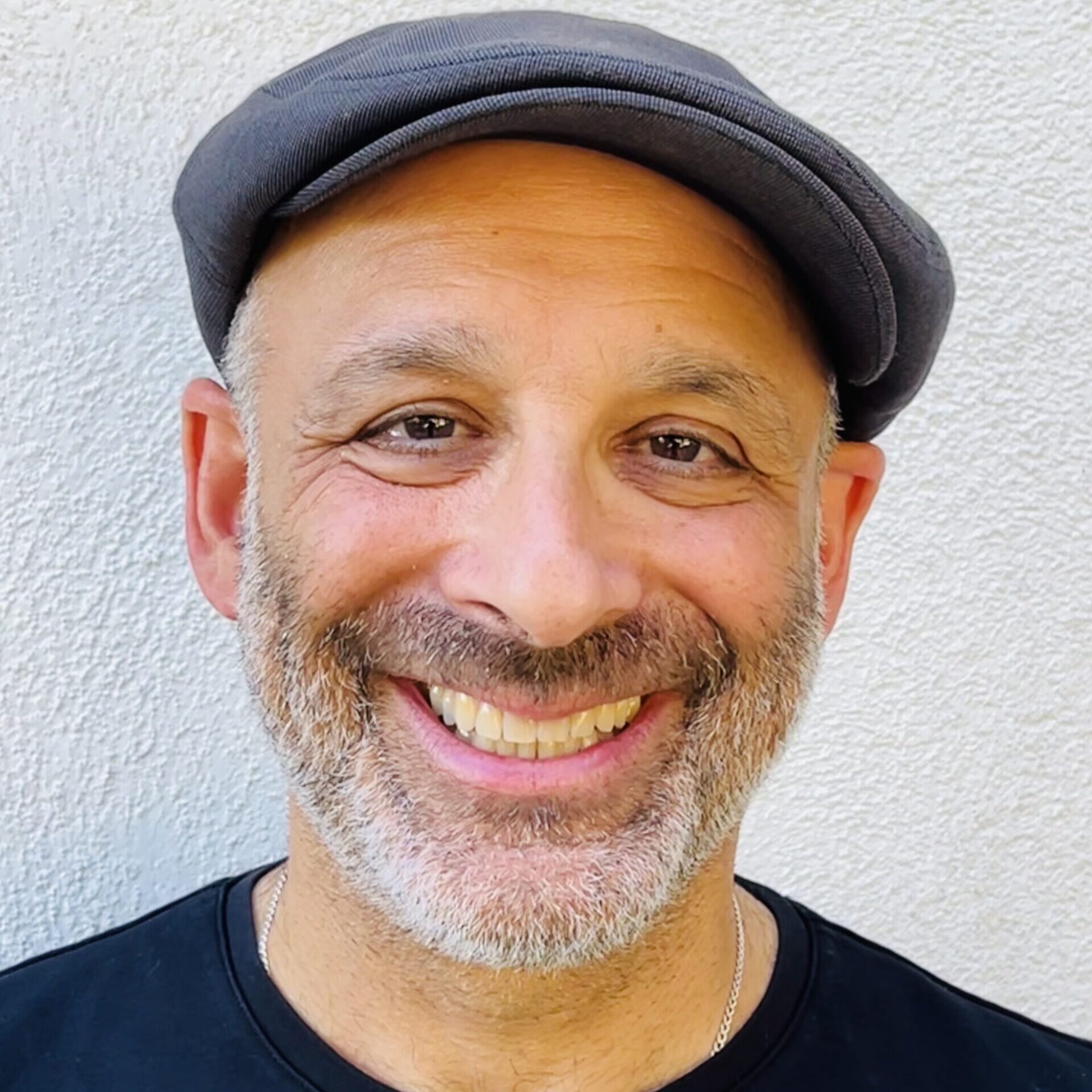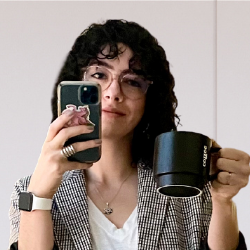This piece is part of Exploring Judaism’s 5784 Passover Reader. Download the whole reader here.
Each spring, as we gather for a Passover seder, our personal narratives, familial customs, and communal history join us at the table in the form of the seder plate.
From the maror (bitter herbs), karpas (green vegetable), and haroset (sweet fruit paste), to the beitzah (egg) and zeroa (shank bone), each element carries profound significance as we recall the story of our liberation and renewal. The idea of changing the items arranged on the seder plate may feel like a deviation from tradition; however, as our story has continued to evolve over thousands of years, so should our rituals and practices. We navigate this evolution with the blessing of modern sensibilities to honor our traditions in a way compatible with our developing values.
For many of us, a growing awareness of animal suffering challenges the traditional components of the Seder plate. We wish to preserve the meaning and intention behind our rituals while feeling called to change some of the specific forms to better align our actions with our ethics.
During the Passover Seder we will ask how this night is different from all others so let’s extend that curiosity and ask how this year’s celebration can be different from those past. Instead of constraining ourselves to the confines of the Seder plate as it’s been taught to us, let us focus on honoring our history—the story of the cruelty we faced as slaves in Egypt—and our present—the knowledge of the cruelty animals raised for food face in today’s industrialized agricultural system—and make new meaning and traditions.
Let’s start with our past.
The earliest text we have stated that the first seders were simple meals consisting of matza, maror, haroset, and two cooked dishes. The requirement of two cooked dishes—specified as beets and rice—symbolized indulgence and helped fulfill the commandment to rejoice on the holiday. Some scholars speculate that the seder should be vegetarian, to not give the appearance, following the Temple’s destruction in 70 C.E., that we were doing the sacrifice outside of and without the Temple. Others suggest that cooked beets and rice were affordable to everyone and made the holiday’s joy a communal experience.
Traditionally, the Seder plate has featured a couple of items of animal origin.
The shank bone and egg symbolize the Paschal and Festival offerings brought to the Temple when it stood. Both the egg and bone are roasted, as a nod to sacrificial offerings that were consumed in fire. Over time, new meanings came to be associated with these items. The shank bone became a symbol of God’s strength, that liberated our people, and the egg came to represent birth and renewal.
Today, the reality behind our ritual items is often hidden in favor of the symbolic meaning we’ve attached to them. In the U.S., 99% are raised in factory farms in unnatural and cruel conditions. Kosher animal products are no exception, virtually all of them also come from factory-farmed animals. These agricultural operations don’t just harm animals, they also wreak havoc on public health and our environment.
As stewards of tradition, we have the agency to reinterpret these symbols in alignment with our values. For those exploring plant-based alternatives, there are many options to choose from that maintain the seder’s symbolism and align with our Jewish values. Consider substituting a roasted beet for the shank bone. For the egg, opt for a white radish, a small and peeled potato, or even a round, spring flower. There are many plant-derived options we can choose from that preserve the meaning and purpose of the Seder plate.
Passover beckons us to reimagine our rituals, challenging us to confront the ethical implications of our choices. The option for a plant-based Seder plate is a testament to our commitment to compassion and justice. As we celebrate and re-tell our liberation story, may we extend the same call for freedom to all beings. This year, let us create space for new traditions that honor our values and embrace the diversity of our evolving world.
Authors
-

Based in Los Angeles, Jonathan is an ordained Conservative rabbi who served a wonderful congregation for 25 years before deciding it was time for something different. In addition to serving all animals, Jonathan is the co-founder of the Valley Chevra Kaddisha and is crazy about English Premier League Soccer, fostering mama dogs and their puppies, raising chickens, and playing ukulele badly.
View all posts -

Kayla crafts educational and engaging digital content that facilitates meaningful conversations and positive change. Kayla brings a deep knowledge of food systems and a passion for animal advocacy to their role as the Director of Digital Engagement for the Jewish Initiative for Animals. Offline, you can find Kayla baking challah, reading and writing about food, exploring new vegan restaurants in the Bay Area, or walking with her dog, Ginny.
View all posts https://oyveyitskay.substack.com/







